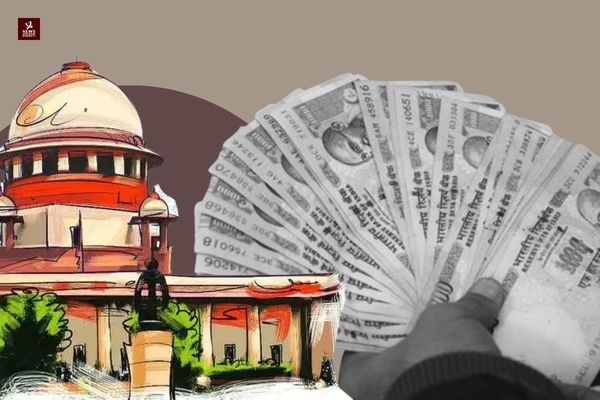Burnol Moment for Liberals! SC delivers demonetisation verdict in favour of NDA govt, says note ban cannot be struck down
The five-judge Constitution Bench upheld the decision of the Union government taken in 2016 to demonetise the currency notes of Rs 500 and Rs 1000 denominations saying the decision could not be faulted just because the centre initiated it.
Total Views | 144
New Delhi, January 02: While giving a major blow to the 'Liberals and the Congress party leaders' who always cries foul over demonetisation at every platform, Supreme Court on Monday (January 02) dismissed a batch of plea challenging the note ban and delivered a verdict in Central governments favour.
The five-judge Constitution Bench upheld the decision of the Union government taken in 2016 to demonetise the currency notes of Rs 500 and Rs 1000 denominations saying the decision could not be faulted just because the centre initiated it.

The Supreme Court said that there was consultation between the Centre and the RBI before demonetisation and that there was reasonable nexus to bring about the decision. The apex court further added that demonetisation was not hit by the doctrine of proportionality. The doctrine of proportionality means that the action should not be more drastic than it ought to be to obtain desired result.
According to Monday's cause list of the top court, there were two separate judgements in the matter, which was pronounced by Justices B R Gavai and B V Nagarathna. Besides Justices Nazeer, Gavai and Nagarathna, the other members of the five-judge bench are Justices A S Bopanna and V Ramasubramanian.
#SupremeCourt dismisses pleas challenging 2016 #Demonetisation , upholds Govt’s decision.
— P C Mohan (@PCMohanMP) January 2, 2023
Huge blow to Pappu and team. pic.twitter.com/FnkcRqP1pv
The apex court had reserved its judgments on the batch of 58 petitions on December 7.
Earlier, it had asked the Centre and Reserve Bank of India to place before it the records pertaining to the 2016 demonetisation decision in a sealed envelope. It had said that it has the power to examine the manner in which the decision for demonetisation was taken adding that "the judiciary cannot fold its hands and sit just because it is an economic policy decision".
The top court's remarks came when the Reserve Bank of India counsel made the submission that judicial review cannot apply to economic policy decisions.
The RBI had told the apex court about the objective of the demonetisation policy to curb black money and fake currencies. Attorney General R Venkatramani had said that the economic policy of demonetisation was connected to a social policy where three evils are attempted to be addressed.
.
.
Bharati Web







